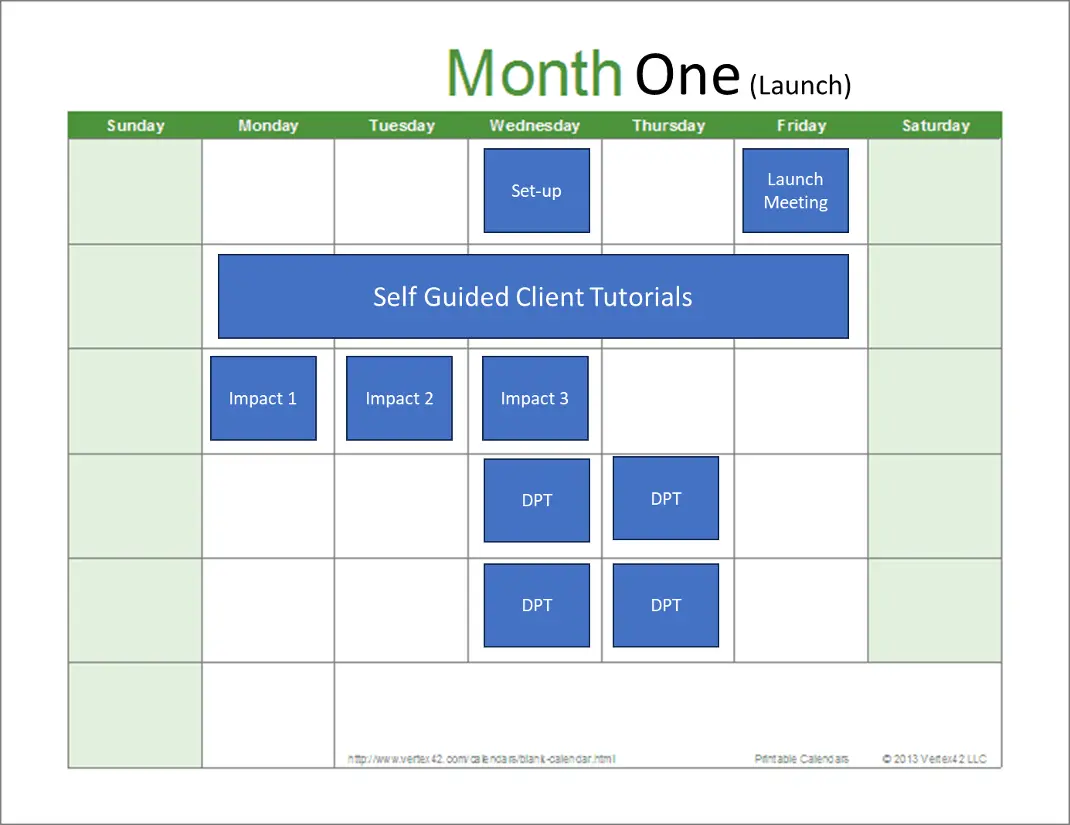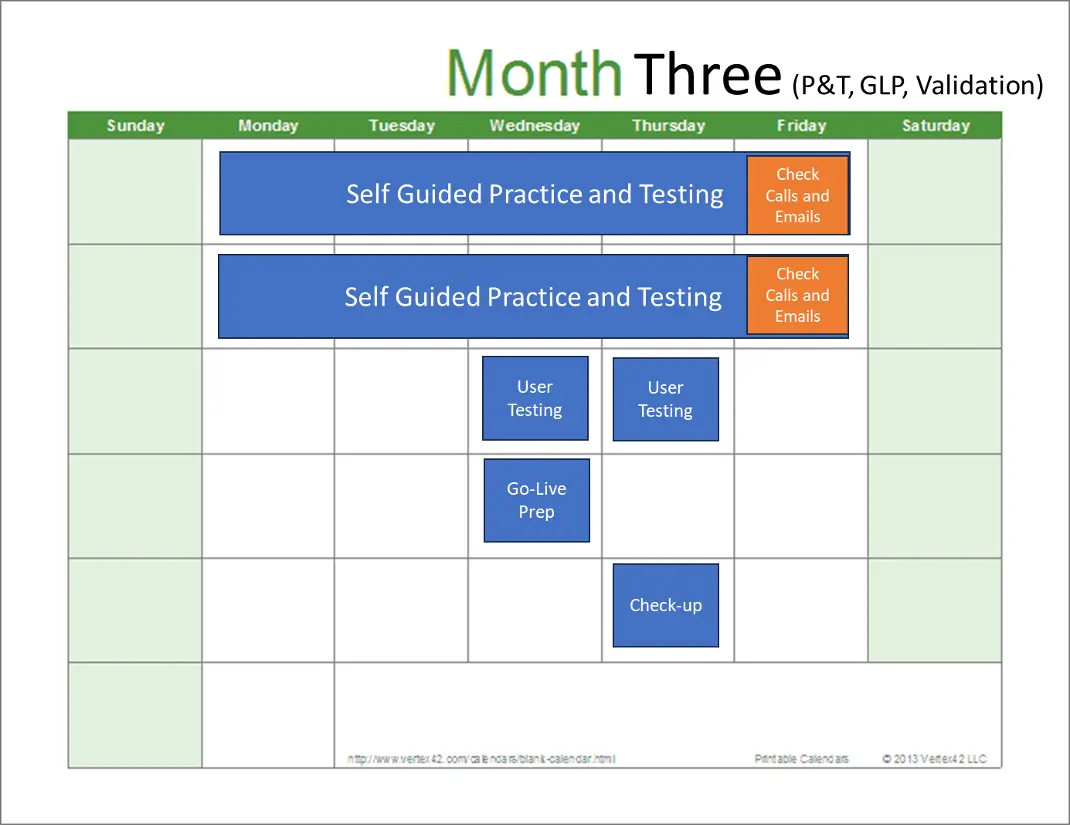Two schools of thought....
When it comes to implementations there are many methods, processes, focuses, but really only a couple schools of thought. The first is a very long implementation process, with lots of consultants on-site, hands-on training, and getting a fully optimized system eight to twelve months later, with a very high price tag. There are benefits and failures to this methodology The second is to quickly do the settings, and get you live in the system as quickly as possible. Provide basic levels of training, use, and support questions via help tickets. There are advantages and disadvantages to this method as well.
Keep this in mind, this isn't just a file cabinet. This is your operating system for the business. An ERP is what you rely upon to track customers, sales, production, projects, employees, everything you do in your company is touched by this system and has information flow through it. Its purpose and intent are to streamline information and communications and eliminate repetitive tasks and duplicative data entry. It is also supposed to help create greater efficiencies because of better information. Why would you skimp on setting this system up, why would you use systems that are not connected, that are many times duplicative and create more steps and processes and problems than they resolve.
Our idea is to blend both of these methodologies to get you to Go-Live quickly, but have a long-term, fully optimized plan in place, and a path to get there. We know that there are certain things that have to be done before next steps can be taken or can be effective. We know from watching our kids grow up that they have to crawl, before they have the strength, balance, and knowledge to be able to walk. Once walking they still need to grow stronger and more capable to be able to run. When they can run, the whole world is open to them. Anything is possible at that point.
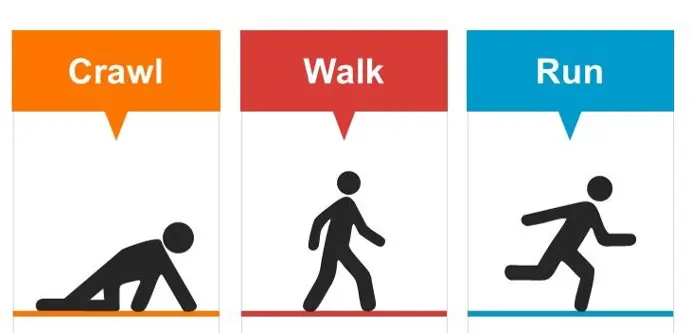
Our Implementation Method
Having a good quality implementation with people who understand your business and your industry is the key to success. The ability to understand your needs and processes and translate that into the process flow of the system is vital. Many companies fail because they try and implement themselves, or they go with a development company that understands the system inside and out but can't understand your business or industry.
Clear Expectations
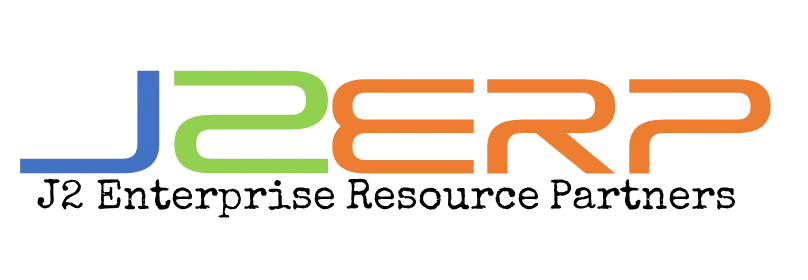
Immersive
We take the approach to provide repetition, access, questions, answers, and allow you to run through every scenario you can think of.
Teaching
We take the time to understand your business and work with you to design, pilot, and test a system that follows your processes. This process needs to be interactive and heavily communicated. We are a team working to create your best system.
Investment
We expect your team to be doing the "homework" that is assigned. Invest in training, testing, and using the system during the implementation. Learning how to use the system, testing the system, and even trying to break the system will create both a better system, but also a better team of people using the system.
Your System
At the end of the day, this is your system. You will get out of it only what you have put into it. We have a process and program that if followed is very successful, but nobody can force knowledge into another person. We ask you to participate and invest in your success.
At Go-Live...
When we reach go live, we want you to be fluid in the system, using very little automation so you can best understand processes, data flow, and how Odoo handles information. This stage is the crawling stage, and it is important, because we do not want you dependent upon us every time there is discrepancy or error. We do not want you relying on us to train new team members. We believe it is vitally important that we play the role of counselor and consultant for continuous improvement of your system, support for when you can't figure it out. But our goal at Go Live is that you can be mostly self-reliant.
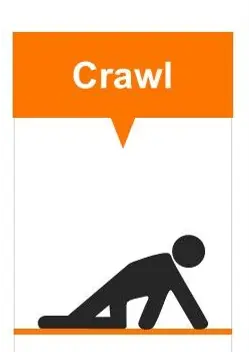
This stage is a critical stage in our process. It is the time frame immediately following "Go-Live". We have delivered the minimal viable product to be useful as a system. It will not have all the automations and efficiencies as perhaps demonstrated or talked about during sales and design. This is on purpose. It is vital that you understand the flow of information and how Odoo handles your company's workflow. If too much is automated at the start, then it can quickly become an issue where you are looking to us to help with basic questions. We want you to not be dependent upon us, not looking to us everytime there is an issue. We want to be there when you can't figure our a problem or issue, and we want to be your team to help you leverage this system to the full extent.
You must crawl before you can walk.
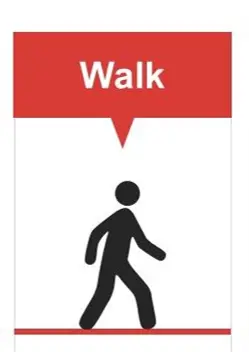
To see the system flourish and deliver on its promise to streamline operations and create greater efficiencies you need to be able to bring in more of the automations, reduce the number of clicks, amount of manual data entry, and eliminate as many touch points as possible. We look to move our clients to walking as quickly as we can after the Go-Live. During the 3 weeks between go-live and first month end close we will be having discussions around thresholds and key indicators that the team is ready to active more automations or even look at customizations.
There will be discussions around the budget for that, and or subscription plans.
You must walk before you can run.
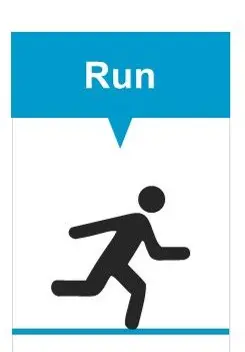
Running is the goal. You are getting maximum use of the system at this point. This is a process of continuous improvement that doesn't have an end. There will always be way to be better trained, customizations needed for greater automations. The goal is to have as few touch points as possible in the system. To reduce data entry load as much as possible and to provide the metrics and information to not only provide great customer service, but to also make the best management decisions that you can.
Expect to invest at least 25%, but closer to 33% of the initial go live budget on an annual basis for 2 to 3 years as a minimum to be able to see the full impact of an ERP system.
Running in the Ultimate Goal.
Launch
Design
Practice
Go-Live
Complete
Improve
Expectation of Time Line
Launch to Design/Pilot/Test
A timeline is a graphical representation on which important events are marked.
DPT/ Additional Functionality
A timeline is a graphical representation on which important events are marked.
Practice and Validation
A timeline is a graphical representation on which important events are marked.
Go Live and First Month End Close
A timeline is a graphical representation on which important events are marked.
Add in Automation, look at additional Customization.
Continuous Improvement
Support and Continuous Improvement
The Schedule
We choose to be a little more aggressive with meetings to keep people using the system and interacting with the system. Long delays between meetings and you lose momentum and lose much of what people have already learned. Early on, repetition is critical. We look to go live in 3 months with the 4th month to operate, have support, and ultimately walk through the first month end close.
